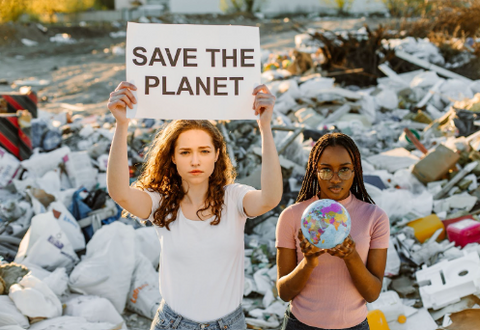Why You Should Stop Using Paper Towels
Whether there is a mess to clean or hands to dry, grabbing a paper towel always seems like it is the easiest solution. With its convenience, we typically go about our day using paper towels whenever it seems necessary then throwing them away without a second thought. With all this paper towel waste, we never stop to think about its impact and if they are truly good for the environment. The unfortunate reality is, they are not.
Many people believe that paper towels are not harmful because paper is a natural resource and is biodegradable. But, looking at the facts of how using them is affecting our world today will definitely change your mind. Just for a glimpse, Americans are using 13 billion pounds of paper each year – of that, each person uses about 3000 tons of paper towels per year. And with the amount of discarded paper towels a day, it takes 51,000 trees to replace that number. This is why it is so important to spread awareness of the issue for the sake of nature and so that people can start adapting to more sustainable alternatives.

Here are 4 facts about the negative impacts of paper towels and why you should stop using them:
1.The Carbon Footprint of Paper Towels is a Threat
To measure the effect that paper towels have on the environment, we analyze its carbon footprint. When looking at the carbon footprint of paper towels, each paper towel contains 0.06 lbs. of carbon-di-oxide. Now while that may seem relatively low compared to other plastic products, the usage is too high.
We obviously can’t only be analyzing a single paper towel sheet. Therefore, we have to look at the bigger picture which is the carbon footprint of paper towels during its entire life cycle journey. When it comes to the fabrication process of paper towels, small pieces of wood are mixed with water which form a solution known as pulp and the pulp industry is responsible for generating 0.5% of total Carbon-di-oxide emissions in the US.

2.Paper Towels Are Not Recyclable
An easy solution that you might be thinking of is to just recycle paper towels. However, it can come in contact with contaminants such as food, greases, and more when used which is why it deems it as unrecyclable.
Paper towels are made up of cellulose fibers which is why it is super absorbent. Due to this, it is hard to remove the grime of the paper towels during the recycling process. Even if the paper towels are mixed, pressed into sheets, and dried properly, the oil and grease may remain and appear as spots or holes in the new recycled paper batch which is why it will always be unfit to recycle.

3.Non-Recyclable = Landfills
So with paper towels not being able to be recycled, they ultimately end up in landfills. It is stated that in the US alone, 6,500,000 tons of paper towels are sent to landfills each year. And landfills pose an even bigger threat to the environment since they release deadly methane gas into the air which is 28 times more potent than methane gas.

4.Paper Towels Cost a Fortune
While paper towels may seem convenient, it is not economical. According to the data shared by market-research firm Euromonitor International, global spending on the use of paper towels at home only (not in offices or public bathrooms) comprised $12 billion with Americans accounting for about $5.7 billion of that total. You probably don’t even realize how much you personally spend on paper towels. While it may not seem like much when you make the occasional trip to the grocery store, an item like that daily will be costly in the long run. Not to mention that you are essentially paying for a product that you know you will throw away.
A Sustainable Solution: Swedish Dish Cloths
Buying and using paper towels can be a tough habit to break. It may seem impossible to change your ways, but it is a lot easier than you think! And it is much more rewarding to eliminate the use of unnecessary paper and use a product that is cheaper and more eco friendly instead.
The perfect alternative solution is using Swedish Dish cloths. Swedish Dish cloths are made from at least 70% cellulose and 30% cotton which makes them all natural and organic. They are durable, super absorbent, and air-dry quickly. Plus they are washable which makes it easy to reuse over and over again. At the end of its life span, the cloths are decomposed into healthy compounds for nature and contribute to the growth of plants. An overall win for the environment!













